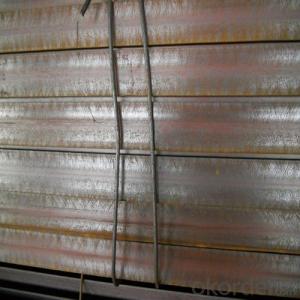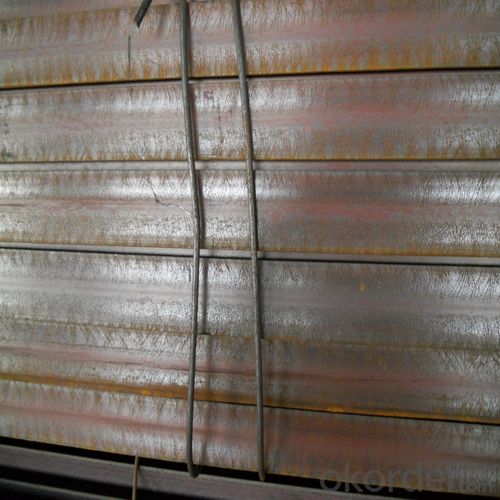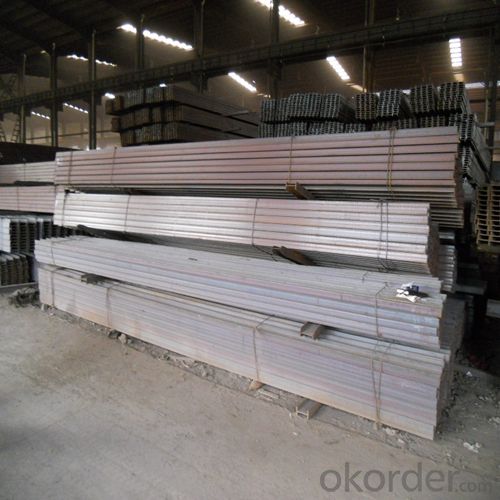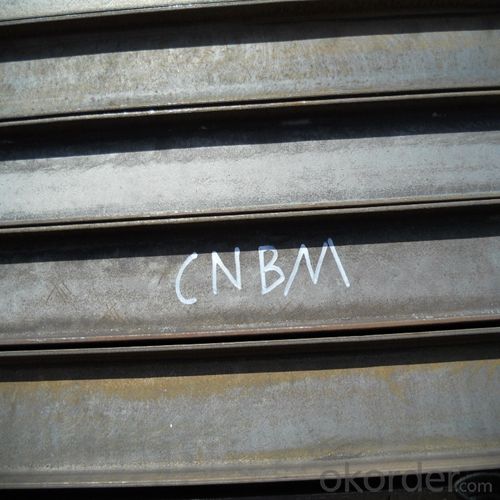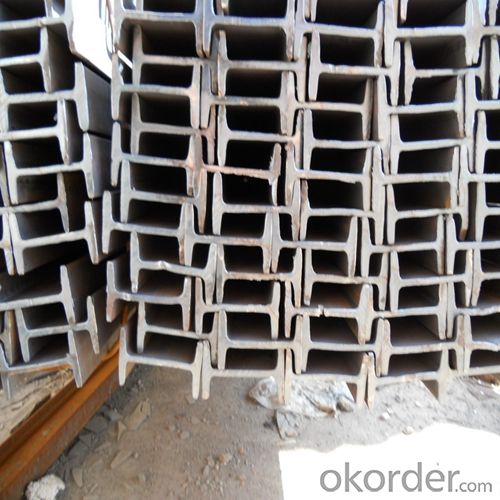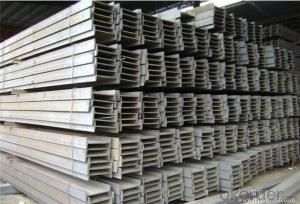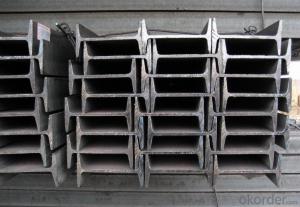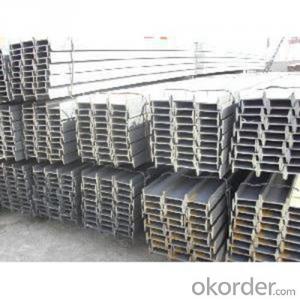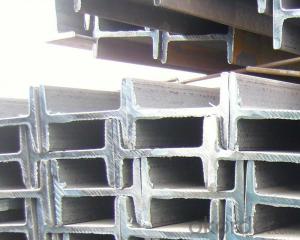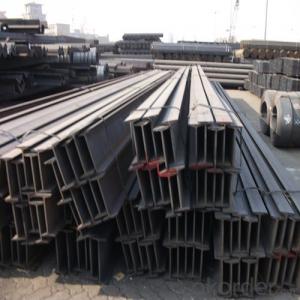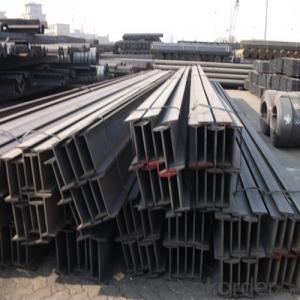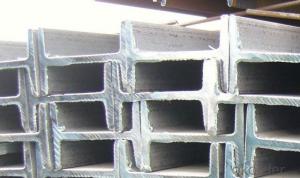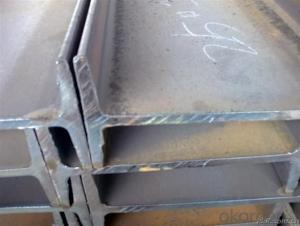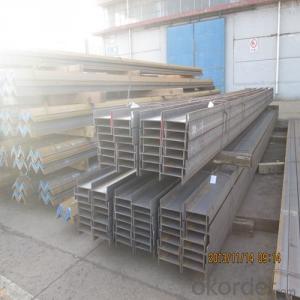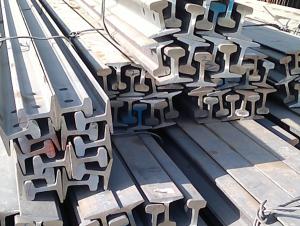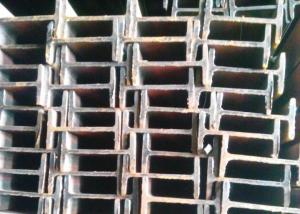Hot Rolled Structure Steel I-Beam Q235 High Quality
- Loading Port:
- Tianjin
- Payment Terms:
- TT OR LC
- Min Order Qty:
- 100 m.t.
- Supply Capability:
- 10000 m.t./month
OKorder Service Pledge
OKorder Financial Service
You Might Also Like
Product Description:
OKorder is offering Hot Rolled Structure Steel I-Beam Q235 High Quality Good Price at great prices with worldwide shipping. Our supplier is a world-class manufacturer of steel, with our products utilized the world over. OKorder annually supplies products to European, North American and Asian markets. We provide quotations within 24 hours of receiving an inquiry and guarantee competitive prices.
Product Applications:
Hot Rolled Hot Rolled Structure Steel I-Beam Q235 High Quality are ideal for structural applications and are widely used in the construction of buildings and bridges, and the manufacturing, petrochemical, and transportation industries.
Product Advantages:
OKorder's Hot Rolled Structure Steel I-Beam Q235 High Quality are durable, strong, and resist corrosion.
Main Product Features:
· Premium quality
· Prompt delivery & seaworthy packing (30 days after receiving deposit)
· Corrosion resistance
· Can be recycled and reused
· Mill test certification
· Professional Service
· Competitive pricing
Product Specifications:
Manufacture: Hot rolled
Grade: Q235, Q345, SS400, S235JR, S275JR, S355JR
Standard: GB, JIS, ASTM ST
Certificates: ISO, SGS, BV, CIQ
Length: 5.8m – 12m, as per customer request
Surface: Painted, galvanized, punched
Packaging: Export packing, nude packing, bundled
Place of Origin: Hebei, China
No. | Depth*Flange Width (mm) | Web Thickness (mm) | Weight (Kg/m) |
10 | 100X68 | 4.5 | 11.261 |
12* | 120X74 | 5.0 | 13.987 |
14 | 140X80 | 5.5 | 16.890 |
16 | 160X88 | 6.0 | 20.513 |
18 | 180X94 | 6.5 | 24.143 |
20a | 200X100 | 7.0 | 27.929 |
20b | 200X102 | 9.0 | 31.069 |
22a | 220X110 | 7.5 | 33.070 |
22b | 220X112 | 9.5 | 36.524 |
25a | 250X116 | 8.0 | 38.105 |
25b | 250X118 | 10.0 | 42.030 |
28a | 280X122 | 8.5 | 43.492 |
28b | 280X124 | 10.5 | 47.888 |
30a* | 300X126 | 9.0 | 48.084 |
30b* | 300X128 | 11.0 | 52.794 |
32a | 320X130 | 9.5 | 52.717 |
32b | 320X132 | 11.5 | 57.741 |
36a | 360X136 | 10.0 | 60.037 |
36b | 360X138 | 12.0 | 65.689 |
40a | 400X142 | 10.5 | 67.598 |
40b | 400X144 | 12.5 | 73.878 |
IPEAA 80 | 78*46 | 3.2 | 4.95 |
IPE180 | 180*91 | 5.3 | 18.8 |
FAQ:
Q1: Why buy Materials & Equipment from OKorder.com?
A1: All products offered byOKorder.com are carefully selected from China's most reliable manufacturing enterprises. Through its ISO certifications, OKorder.com adheres to the highest standards and a commitment to supply chain safety and customer satisfaction.
Q2: How do we guarantee the quality of our products?
A2: We have established an advanced quality management system which conducts strict quality tests at every step, from raw materials to the final product. At the same time, we provide extensive follow-up service assurances as required.
Q3: How soon can we receive the product after purchase?
A3: Within three days of placing an order, we will begin production. The specific shipping date is dependent upon international and government factors, but is typically 7 to 10 workdays.
Images:
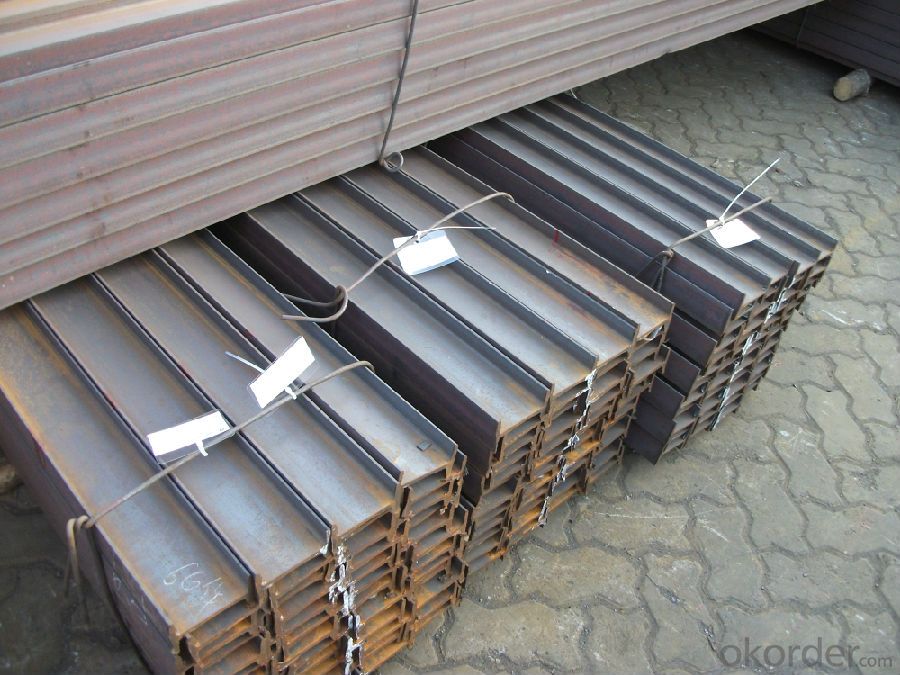
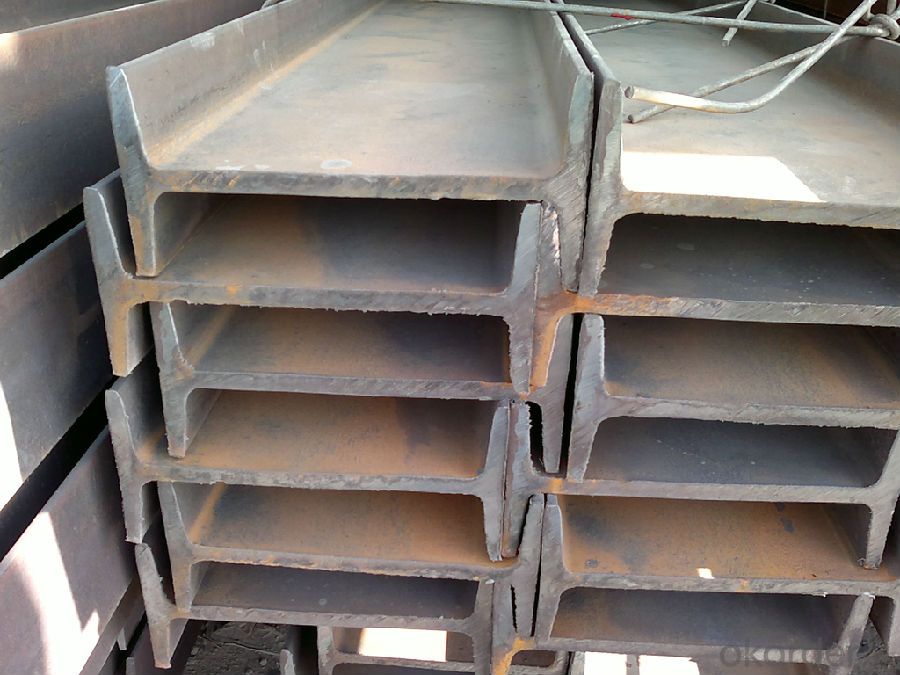
- Q: What does the beam size "H500*250*8*10*10" mean?
- You mean this is the expression of H steel:The sections of section H steel can be represented by the following code names: h*b*tw*t.Section height of h:H steelSection width of section b:H steelThickness of center web of tw:H steelT:H steel wing thickness (that is, up and down the two plates)This is very easy to understand, you say H500*250*8*10*10, that is, H steel section of high 500mm, wide 250mm, the middle plate thickness 8mm, two plates, 10mm thick. You finally have a 10, that estimate of 10 fast, that is the number of H steel.
- Q: What are the different connection methods for Steel I-Beams?
- Depending on the specific application and structural requirements, Steel I-Beams can be connected using several different methods. Some commonly used connection methods include: 1. Welding: The most frequently used method for connecting steel I-beams is welding. This involves melting the base metal and using a filler material to create a strong joint. Welding offers excellent strength and rigidity, making it suitable for heavy-duty applications. 2. Bolting: Steel I-beams can also be connected using bolts. This method involves drilling holes in the flanges or web of the I-beams and inserting bolts through these holes, along with washers and nuts, to secure the connection. Bolting provides ease of installation and disassembly, making it suitable for temporary or adjustable structures. 3. Riveting: Another traditional method for connecting steel I-beams is riveting. This process involves inserting rivets through pre-drilled holes in the flanges or web of the I-beams and deforming them to create a permanent connection. Riveting offers high strength and reliability but requires specialized tools and expertise. 4. Adhesive bonding: In certain cases, adhesive bonding can be used to connect steel I-beams. This method involves applying a high-strength adhesive to the surfaces of the I-beams and pressing them together to create a bond. Adhesive bonding can provide a clean and aesthetically pleasing connection, but it may not be suitable for heavy or dynamic loads. 5. Mechanical connectors: There are various mechanical connectors available in the market specifically designed for connecting steel I-beams. These connectors are often prefabricated and can be easily installed using bolts or welding. They offer a quick and efficient method of connecting I-beams while maintaining high strength and load-bearing capacity. When selecting the appropriate connection method for steel I-beams, it is important to consider the specific structural requirements, load conditions, and design constraints. Consulting with a structural engineer or a qualified professional is recommended to ensure that the chosen connection method meets the necessary standards and specifications.
- Q: How do steel I-beams perform in long-span structures?
- Steel I-beams are commonly used in long-span structures due to their excellent performance. These beams have a high strength-to-weight ratio, which allows them to support heavy loads over long distances without excessive deflection or bending. The I-beam's design, with a flange on either side of the web, provides increased stability and resistance to torsional forces. This makes them well-suited for long-span structures where stability and load-bearing capacity are essential. Additionally, steel I-beams are highly durable and resistant to corrosion. This makes them suitable for long-span structures exposed to harsh environmental conditions, such as bridges or industrial facilities. Furthermore, steel I-beams can be easily fabricated and assembled, allowing for efficient construction processes in long-span structures. Their versatility and availability in various sizes and shapes make them adaptable to different design requirements. In summary, steel I-beams perform exceptionally well in long-span structures. They offer high strength, stability, and load-bearing capacity while being durable and easy to construct. These qualities make them a popular choice for architects and engineers when designing structures that require support over extended distances.
- Q: Can Steel I-Beams be used for overhead cranes?
- Yes, steel I-beams are commonly used for overhead cranes due to their high strength and load-bearing capacity. They provide the necessary support and stability required for heavy lifting operations.
- Q: Can steel I-beams be used in the construction of parking structures?
- Yes, steel I-beams can be used in the construction of parking structures. Steel I-beams are a popular choice for constructing parking structures due to their strength, durability, and ability to support heavy loads. These beams are designed to withstand high levels of stress and provide structural stability, making them an ideal choice for multi-level parking structures. Additionally, steel I-beams can be easily fabricated and installed, allowing for efficient construction processes. Their versatility also allows for flexible designs and configurations, accommodating various parking layouts and requirements. Overall, steel I-beams are a reliable and cost-effective option for the construction of parking structures.
- Q: What are the different types of connections used for steel I-beams in seismic areas?
- In seismic areas, the connections used for steel I-beams are crucial for ensuring the structural integrity and safety of the building. There are several different types of connections that are commonly used: 1. Welded Connections: Welding is the most common method of connecting steel I-beams in seismic areas. It involves fusing the steel members together using heat and pressure. Welded connections provide excellent strength and rigidity, making them suitable for seismic applications. However, they require skilled labor and careful inspection to ensure proper quality and adherence to building codes. 2. Bolted Connections: Bolted connections involve using high-strength bolts to secure the steel I-beams together. This type of connection allows for easier installation and disassembly compared to welding. It also provides a certain level of flexibility, allowing for some movement during seismic events. However, bolted connections may require periodic inspection and maintenance to ensure the integrity of the bolts. 3. Moment Connections: Moment connections are specifically designed to resist the rotational forces that occur during seismic events. This type of connection allows for the transfer of bending moments between steel beams and columns, ensuring the overall stability of the structure. Moment connections are typically welded and require careful engineering and design to ensure their effectiveness in seismic areas. 4. Shear Connections: Shear connections are used to transfer lateral forces between steel beams and columns. They are designed to withstand the shear forces that occur during seismic events. Shear connections can be achieved through welding or bolting, depending on the specific requirements of the project. These connections are crucial for maintaining the overall stability and strength of the structure. 5. Reduced Beam Section (RBS) Connections: RBS connections are a specialized type of connection used in seismic areas to improve the ductility and energy dissipation capacity of steel I-beams. This connection involves reducing the cross-section of the beam near the connection point, which helps to absorb and dissipate the energy generated during seismic events. RBS connections are typically designed using a combination of welding and bolting techniques. It is important to note that the specific type of connection used for steel I-beams in seismic areas will depend on various factors, including the design requirements, building codes, and the expertise of the structural engineer. Proper design, installation, and maintenance of these connections are essential to ensure the structural integrity and safety of buildings in seismic areas.
- Q: Is the track T or I-beam?
- In the upper rail, the layer and is contacted with a wheel, is adding another metal, indium, it added to the rail on the part of the hardness of the case, even has some toughness, the train wheel is very important, it and the "tire" contact, collision and there will be some flexibility, to ensure the safe operation of the train.
- Q: Can steel I-beams be used for utility pole supports?
- No, steel I-beams are not typically used for utility pole supports. Utility poles are usually supported by wooden or concrete poles that are specifically designed and engineered for the purpose, as they offer better flexibility, durability, and electrical insulation properties.
- Q: What are the typical applications for Steel I-Beams?
- Steel I-beams are commonly used in construction for structural support in buildings, bridges, and infrastructure projects. They are also used in the manufacturing industry for heavy-duty equipment and machinery, as well as in the automotive industry for vehicle frames. Additionally, steel I-beams are widely utilized in the shipbuilding industry for constructing the framework of ships and offshore structures.
- Q: Can steel I-beams be used in bridges?
- Certainly! Steel I-beams are extensively utilized in bridge construction. These beams possess numerous advantages that render them perfect for bridge applications. Initially, their high strength-to-weight ratio allows them to bear heavy loads while maintaining a relatively light weight. Consequently, they utilize materials efficiently and enable longer spans without the need for extra supports. Furthermore, steel I-beams exhibit exceptional resistance to corrosion, a crucial aspect for bridges constantly exposed to harsh weather conditions. They can be treated with protective coatings or galvanized to enhance their durability and longevity. Moreover, steel I-beams are adaptable and can be fabricated to meet specific design requirements. They can be easily modified and interconnected to create various bridge configurations, offering flexibility in bridge design. In conclusion, steel I-beams are widely favored for bridges due to their strength, durability, and versatility. They have been extensively employed in numerous bridge projects worldwide, proving their reliability and effectiveness in constructing stable and long-lasting structures.
Send your message to us
Hot Rolled Structure Steel I-Beam Q235 High Quality
- Loading Port:
- Tianjin
- Payment Terms:
- TT OR LC
- Min Order Qty:
- 100 m.t.
- Supply Capability:
- 10000 m.t./month
OKorder Service Pledge
OKorder Financial Service
Similar products
Hot products
Hot Searches
Related keywords
